SGaang Gway
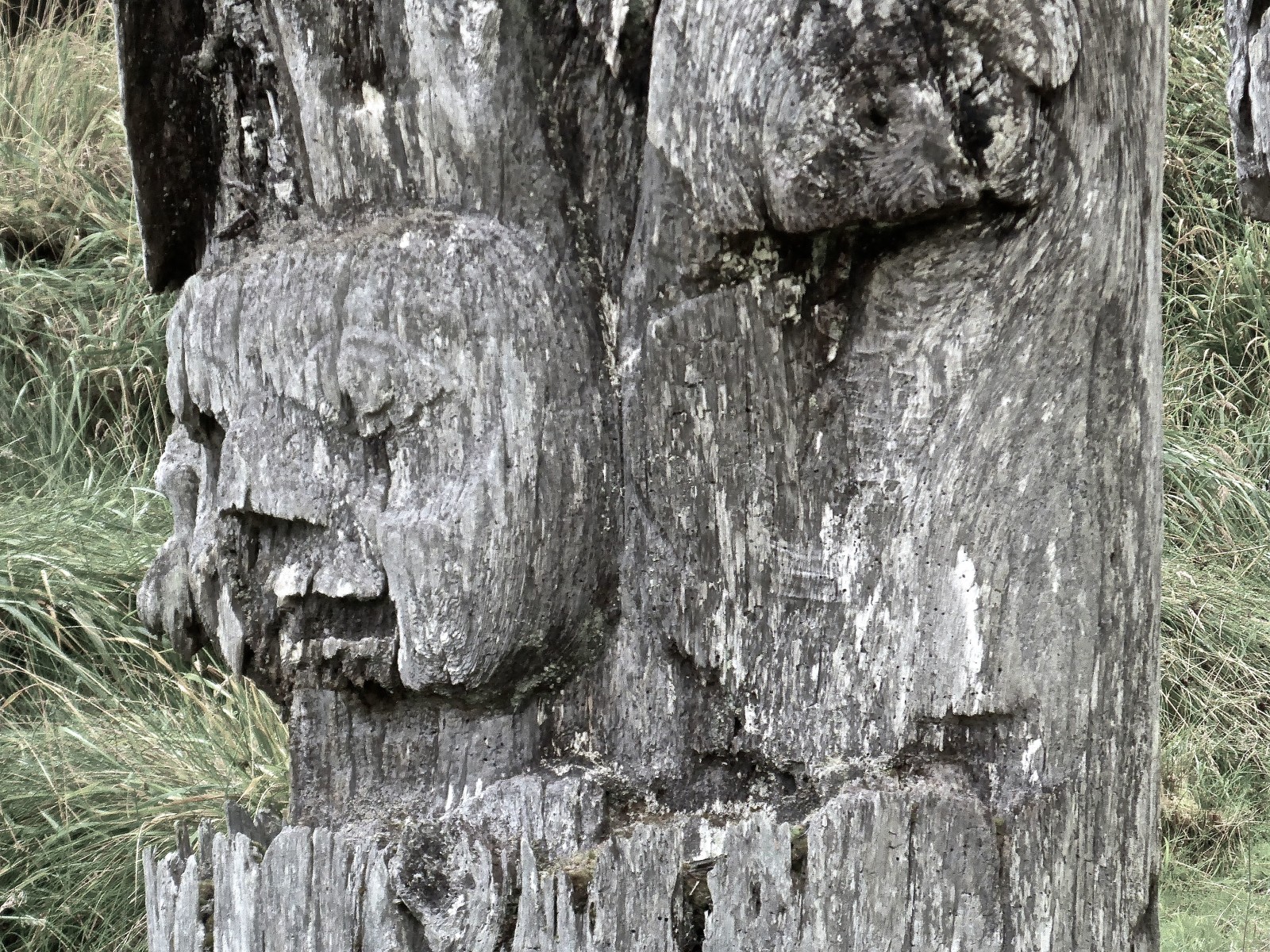
S’Gaang Gway meaning Wailing Women, is the Haida name for Anthony Island, and is name such for the sound of the water wailing through a blowhole on the island. It is also the site of the best preserved Northwest Native village in the world and is an UNESCO World Heritage Site. The other name for this village is Ninsits, a white version of the name of a chief from this village. S’Gaang Gway was one of the last inhabited villages and had 20 long houses before it was abandoned in the 19th century. Today the presence of this large village can still be felt. Tucked into a picturesque bay it is sheltered from the waves and from enemies. Now one has to walk about 10 minutes through the moss covered forest to reach the village.
- Walking to the site
- The perfect hideaway
Stumbling out from the trees onto the beach we are immediately struck by the memorial poles, still standing proud as they have done for the last 200 years. Of all the sites in Gwaii Haanas, this is the only one where Haidia permitted the poles to be re-centered, enabling them to stand longer than their typical lifespan. Traditionally a pole would stand until it fell and their it would lie. It would not be re-raised.
The poles remaining at SGaan Gway are all mortuary poles. In Haida tradition when a chief passed he was bound into a curled up position and placed in mortuary house to decompose as his pole was built. This process took 1-2 years. When the pole was ready to be raised he was placed in a bentwood box which was mounted to the top of the pole. The boxes no longer remain, but the poles stand to preserve the chief’s stories and crest and to speak of his great wealth.
SGaang Gway also has two large house pits remaining, one with it’s corner post still keyholed into it’s beam. The size of trees used to build these home were outstanding. At the front of each longhouse a frontal pole would stand. The frontal poles from SGaang Gway were all removed by the Haida in the 1980s to be preserved in museums around the world. A small door would be located several feet in the air and was just big enough for one man to climb through. This was for security purposes. Any enemy attempting to break into the house could easy by killed by men waiting on the other side of the door and dispatched before the next intruder entered.
- Keyhole beam
- Large wall beam
Haida took many slaves from nearby mainland tribes, especially from Bella Bella. However slaves were apparently granted a very decent lifestyle and could marry into the Haida tribe. Any child born would take it’s mother’s standing in the tribe. Haida are a matriarchal society with crests and linages always following the mothers side. Therefore the chiefdom would not go to the chiefs son, but to a nephew on the the mothers side, raised from birth to become the next chief. There are two tribal crests, the Raven and the Eagle. Just as with the Tglingit in Alaska, a Raven must marry and Eagle and vice versa. Also an Eagle chief may only hire Raven men to work on his longhouse, to ensure the wealth remains distributed through the village. Beneath the Raven and Eagle crests have many other small family crests, such as the bear and the frog and the beaver. A Haida must be very careful which animal crests they wear, as they can only wear one that in under their correct family crest.
- New life from old posts
The Haida valued wealth and enjoyed displaying this wealth not only through potlucks and totem poles, but also through copper shields. However I find their value of songs and dance as wealth the most interesting. Song and dance could be given, like other physical commodities and once given the givers could no longer perform the dance and song. In a culture that had no written history, these songs and dances were highly highly valued.
Haida culture came alive for us at SGaang Gway through the stories that Ken, the watchman, told us. He was a treasure of knowledge which he happily shared as we meandered through the site. Although the kids made it hard to feel the presence of the past we felt privilege to be able to visit this place first hand.

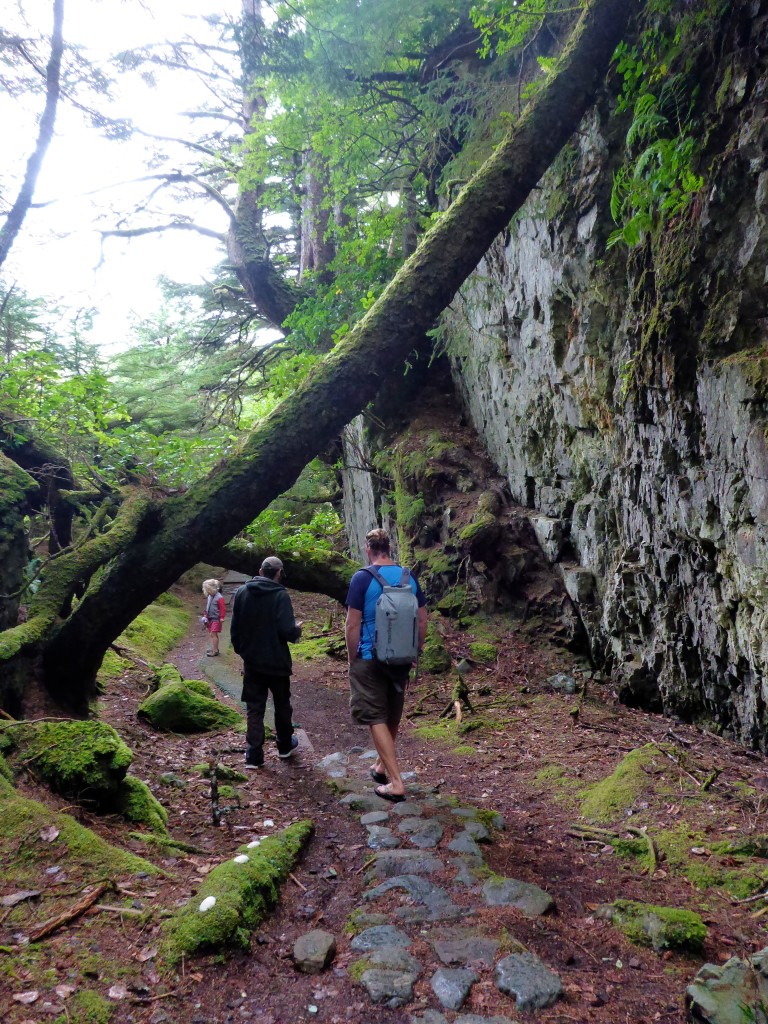

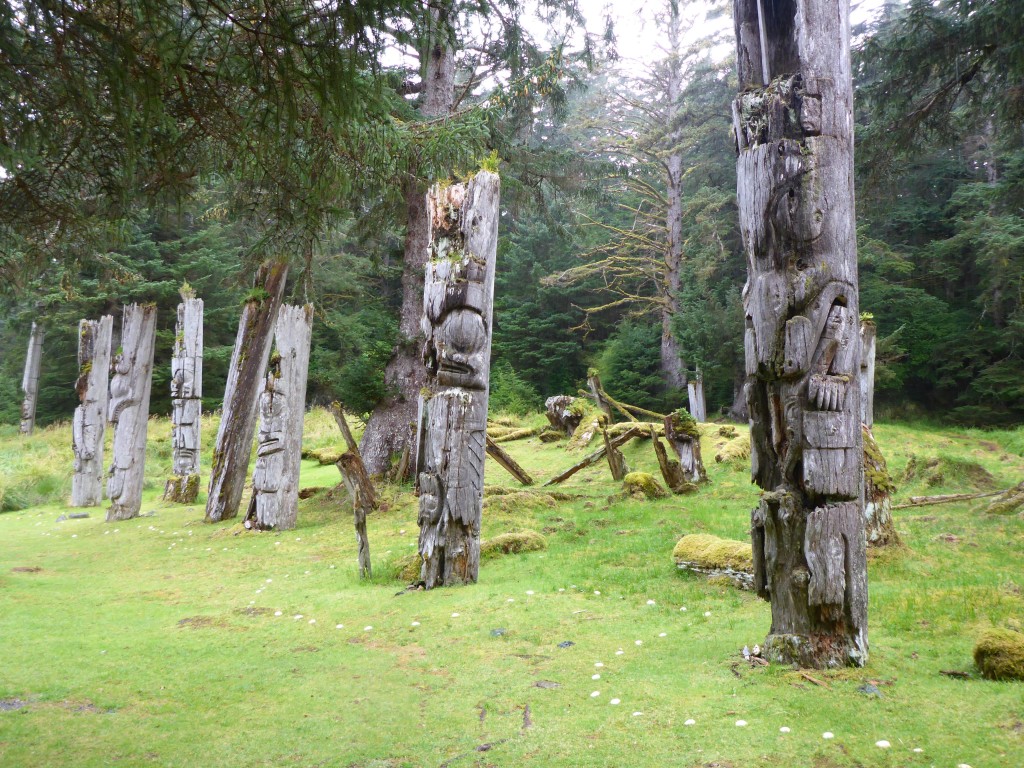
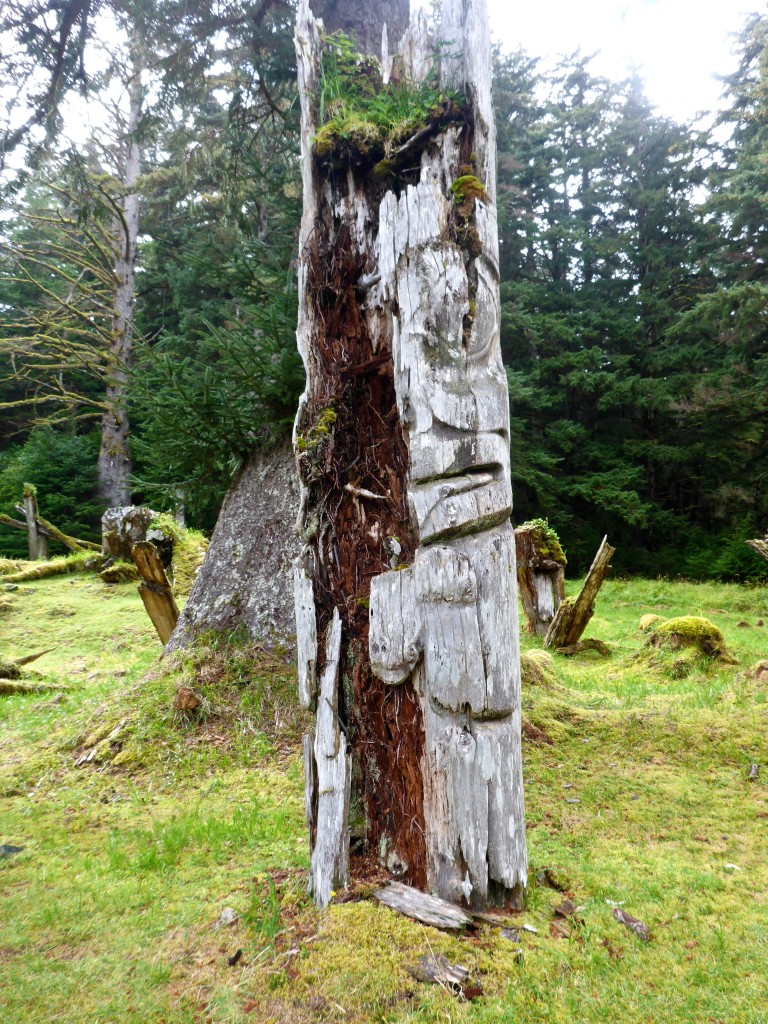
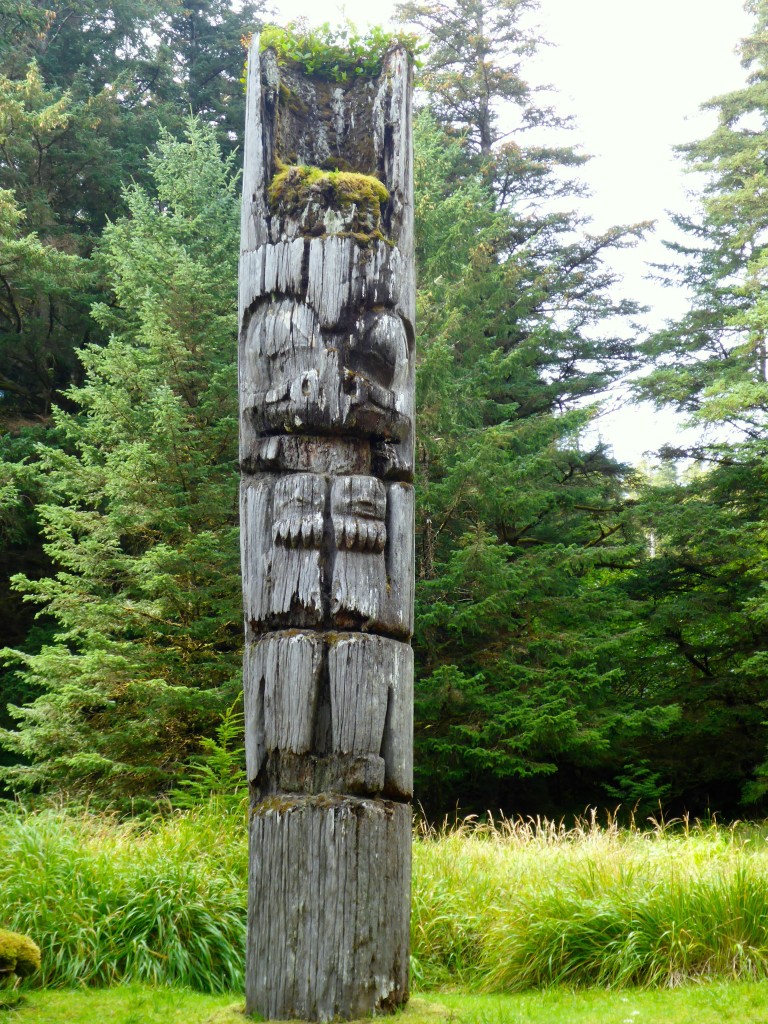
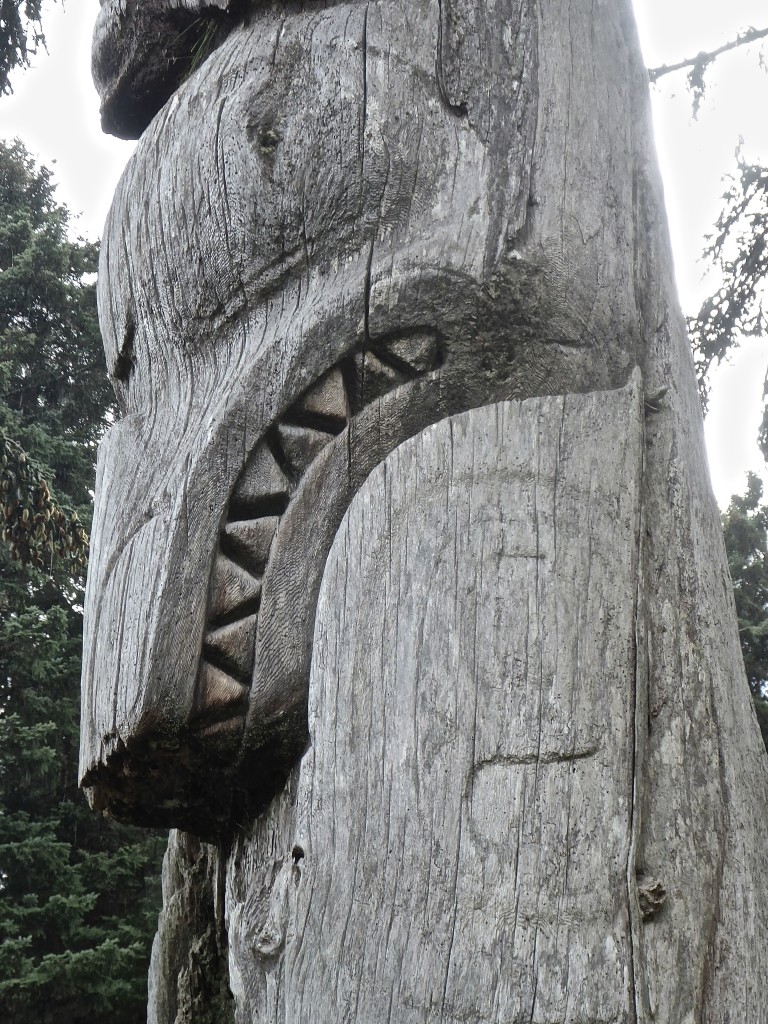
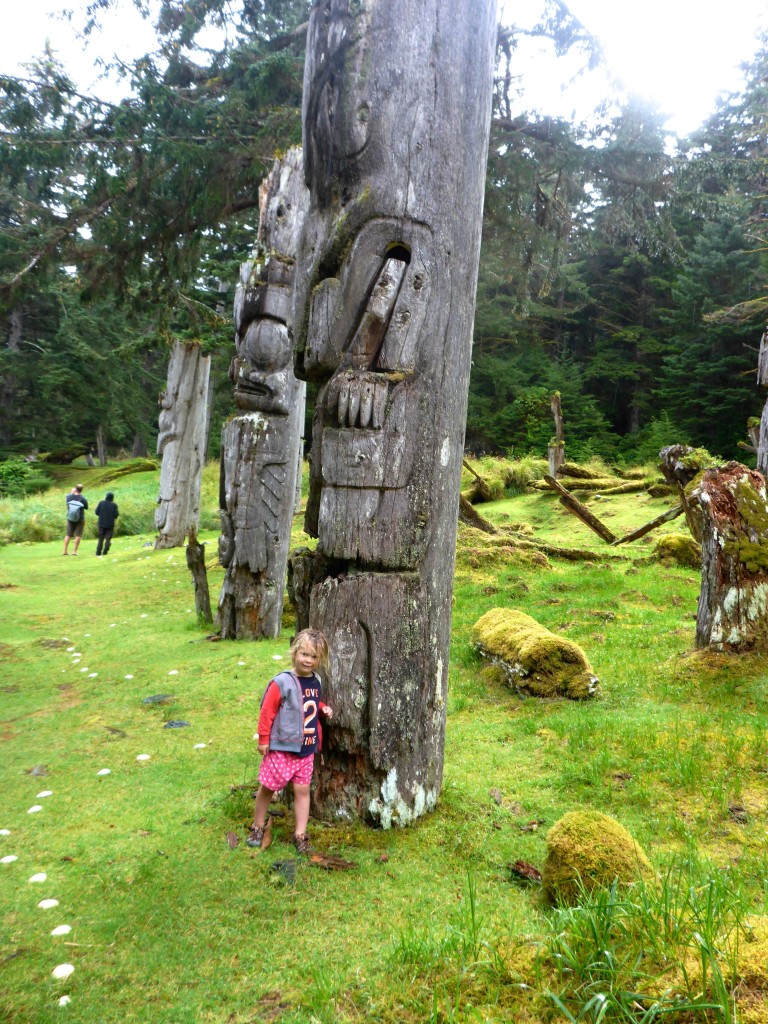
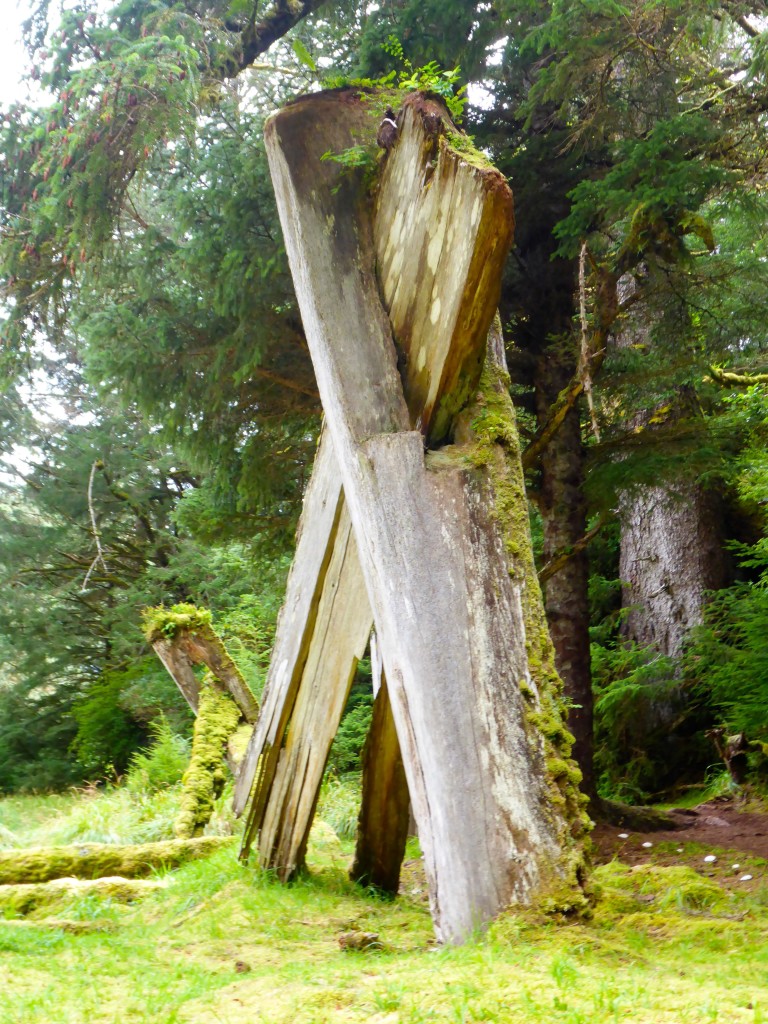
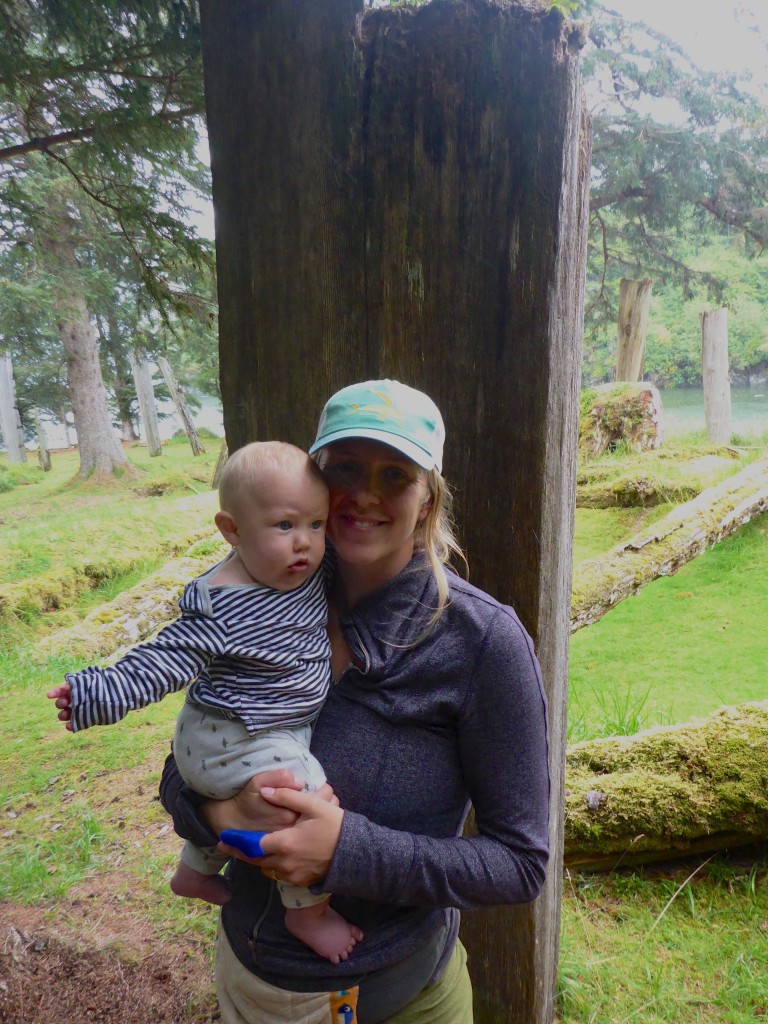


Recent Comments